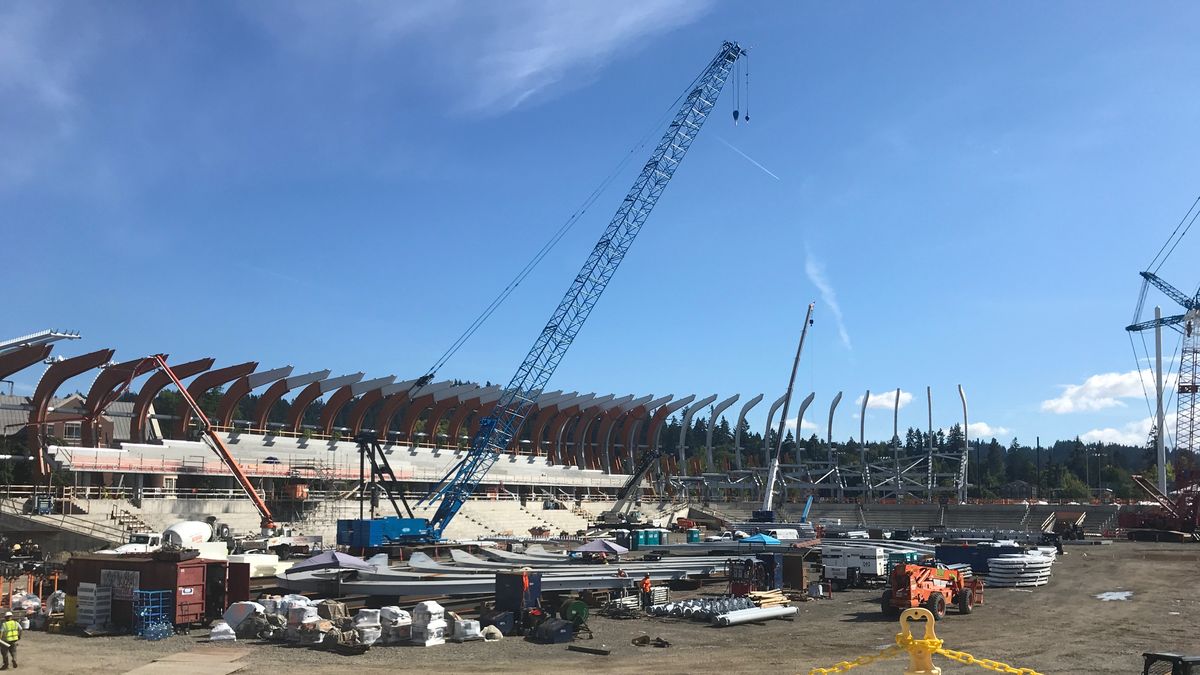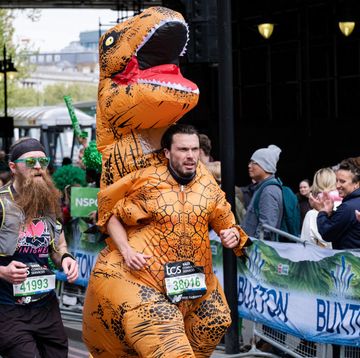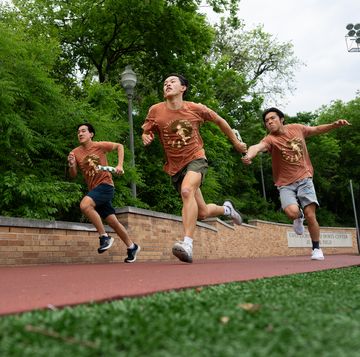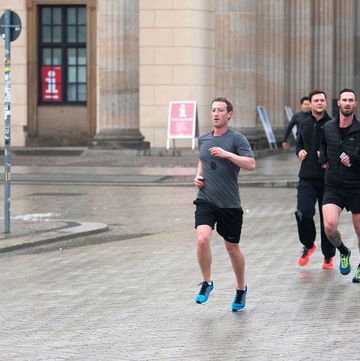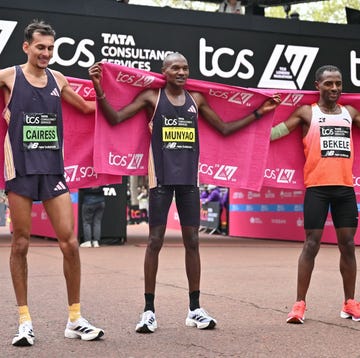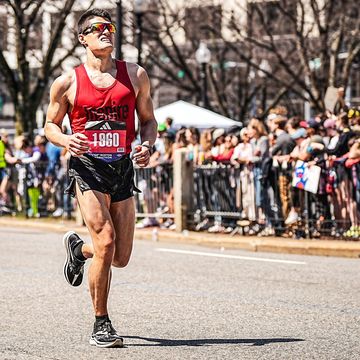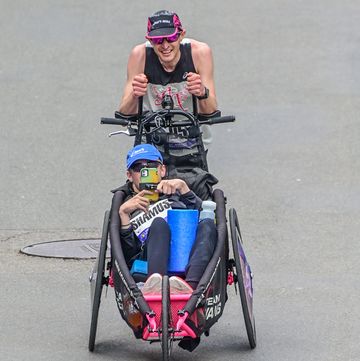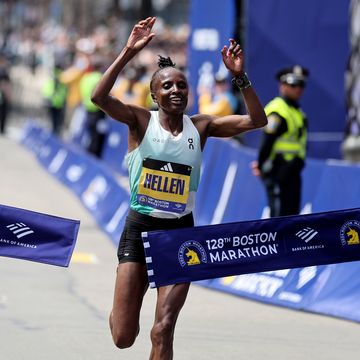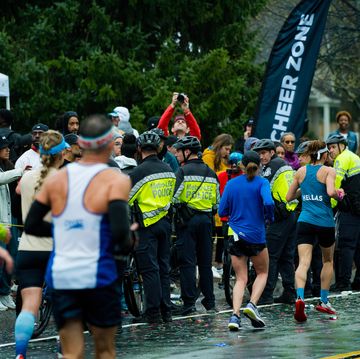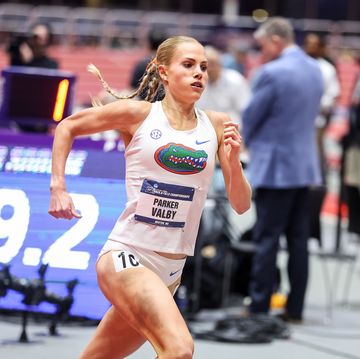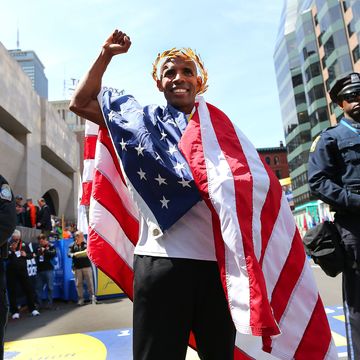Hayward Field at the University of Oregon in Eugene, long considered the heartbeat of track and field in the U.S., was torn down in 2018, its old wooden grandstands to be replaced by a state-of-the-art facility.
As that new stadium takes shape, Robert Johnson, Oregon’s head track and field coach, and Todd Van Horne, vice president and creative director for Nike special projects, took reporters inside the construction site on September 11 for a view of the ongoing work.
Although the pace of construction is “aggressive,” Van Horne said, the work is currently on schedule. The track should be completed in eight months, in time for the 2020 Pac-12 championships, May 16–17.
That’s the first event among a high-profile slate of meets to be held at the facility, including the 2020 U.S. Olympic Trials next summer, the NCAA championships, and IAAF World Championships in 2021.
Johnson and Van Horne spoke about the new stadium’s many amenities, which were designed with Oregon athletes in mind.
“We consider it a world-class theater for track and field, it is the Carnegie Hall of track and field, but this is truly built for the athlete,” Van Horne said.
The ground floor level of the new facility will house a 140-meter indoor track, a two-story indoor pole vault area, locker rooms for the Oregon track teams, a theater, a weight room, an athlete lounge, an athlete medicine room, hydrotherapy pools, and even a barber shop.
There are no locker rooms for visiting athletes, Johnson said.
The concourse level will hold Hayward Hall, a museum dedicated to the history of Hayward Field and Oregon track.
For spectators, the new facility features an asymmetrical design, with more seating around the finish line and fewer seats along the backstretch. Views of the track are unobstructed throughout. The website lists permanent seating as 12,650; expandable to 25,000 with temporary seating to host the world championships.
[From training tips, to fueling strategies, to improving the mind-body connection, the Runner’s World 2020 Calendar will help you run your best all year long.]
Critics of the new Hayward Field, funded by Nike founder Phil Knight and his wife, Penny, and 50 other donors, say the large facility overpowers the surrounding neighborhood and campus buildings. A multistory tower featuring balconies seven levels high looms over the track and is the highest building for several blocks.
Van Horne refers to the stadium’s design as showcasing “heroicism” and highlights a pedestrian plaza—typical of Olympic facilities—at the track’s northeast corner to welcome fans inside. The top floor of the tower, which holds meeting rooms and offices, will have an observation deck that is open to the public.
“One of the things I’ve learned, one of the things [former Oregon coach] Vin [Lananna] told me when he was here is that we’re very inclusive and nothing will change,” Johnson said. “Those 12 o’clock practices that the community comes in and runs on the track? Those will still happen.”

Sarah Lorge Butler is a writer and editor living in Eugene, Oregon, and her stories about the sport, its trends, and fascinating individuals have appeared in Runner’s World since 2005. She is the author of two popular fitness books, Run Your Butt Off! and Walk Your Butt Off!
